A healthy plant has deep green leaf plates. Heterogeneity of the shade always indicates a problem. Sometimes this does not threaten anything serious, but more often it can lead to grave consequences. Therefore, you need to find out why white spots appear on the leaves of the cucumber. Based on this, it will become clear what to do in order to save the plant’s life and get a rich harvest.
Content
Etiology
White spots on cucumbers appear with many problems. This may be a temporary reaction to adverse weather conditions, disturbances in agricultural technology, or be a symptom of a dangerous pathology, be the result of an attack by pests. To identify the source of the problem, agronomists recommend paying attention to the general condition of the plant and the accompanying symptoms.
Burn
Although cucumber is a light-loving plant, it reacts poorly to direct sunlight. Typically, burns occur when water gets on the leaves in clear, hot weather. Then its drops, like lenses, burn out healthy tissue. Therefore, watering should be done either in the morning or in the evening. The sun's rays adversely affect the seedlings of cucumbers, which have recently been planted in the ground, as the delicate leaves of a young plant adapt to the environment for a long time.
It is not difficult to distinguish a burn from other conditions. It is enough to analyze how the plants were watered and compare this factor with solar activity in recent days. It is important to make sure that in addition to white spots on the plants there are no more signs of damage. Burns treatment does not exist. In this case, you need to review the irrigation regime and protect the beds from the sun by using a light-scattering shelter.
Powdery mildew
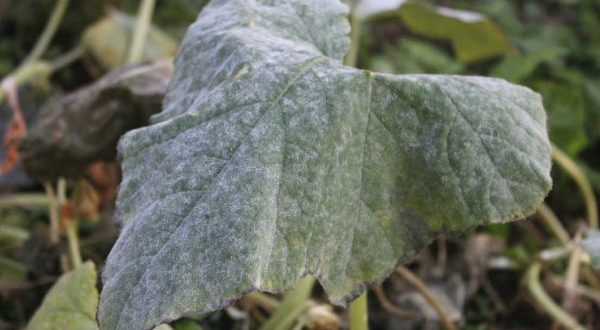 The formation of white plaque on cucumbers in a greenhouse or on open ground is one of the main signs of powdery mildew. Small spots, visually similar to flour, become visible on the sheet. Over time, they spread to the entire sheet plate, and it begins to dry, turn yellow. Powdery mildew may appear only after infection with obligate parasites. They actively reproduce at high humidity and a temperature of about 20 ° C. Agronomists say that under such conditions, 3 days are enough to completely damage the leaf.
The formation of white plaque on cucumbers in a greenhouse or on open ground is one of the main signs of powdery mildew. Small spots, visually similar to flour, become visible on the sheet. Over time, they spread to the entire sheet plate, and it begins to dry, turn yellow. Powdery mildew may appear only after infection with obligate parasites. They actively reproduce at high humidity and a temperature of about 20 ° C. Agronomists say that under such conditions, 3 days are enough to completely damage the leaf.
Powdery mildew is not observed on strong plants. It often affects weakened sprouts. The risk group includes bushes that are in conditions of sudden temperature changes. Because of this, their phytoimmunity weakens. Exacerbating the problem may be a lack of light. Seedlings, which gardeners grow on the balcony and do not use additional artificial lighting, often suffer from the latter.
White mosaic
White mosaic is a viral disease. The main development of pathology occurs in living plant cells, however, the pathogen can also be transmitted through dead leaves. The virus can be in the soil or on working tools for a long time. After getting on a healthy leaf, it begins to destroy chlorophyll. As a result, the amount of carbohydrates in the plant is reduced.
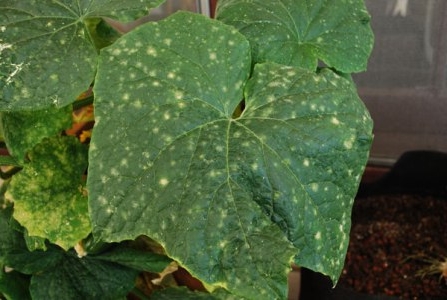 You may be interested in:
You may be interested in:Usually a white mosaic affects greenhouse plants. The provoking factors in this case are:
- thickening of landings;
- temperature differences;
- high temperature in the room.
The main sign of the white mosaic is the defeat by light spots, which at first have fuzzy borders. They are located near the veins. Gradually, the affected areas increase and, in the end, the entire sheet becomes white or yellow. Pathology inhibits plant growth and reduces yield. White mosaic often happens on seedlings, which have recently been transplanted to a permanent place. In this case, young leaves and shoots suffer.
Downy mildew
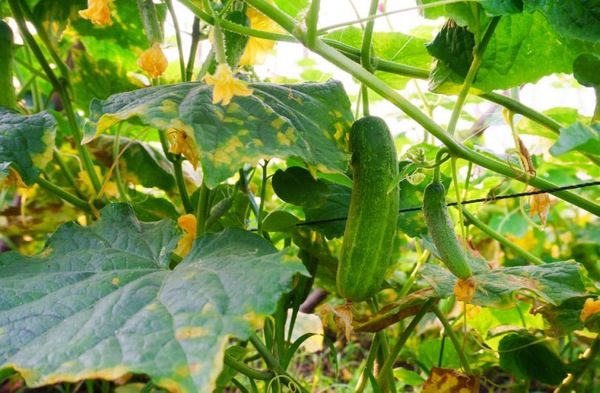 With downy mildew (oversporosis), a yellow oily spot appears on the upper part of the leaf plates along the veins. Bottom on the leaves of cucumbers observed the formation of white plaque with a purple tint. Soon, the spotting increases, and the affected areas become brown. The thickness of the plaque increases. The leaves begin to dry, become brittle. In some parts of the sheet, fabric may fall out. This can lead to complete baldness of the plant.
With downy mildew (oversporosis), a yellow oily spot appears on the upper part of the leaf plates along the veins. Bottom on the leaves of cucumbers observed the formation of white plaque with a purple tint. Soon, the spotting increases, and the affected areas become brown. The thickness of the plaque increases. The leaves begin to dry, become brittle. In some parts of the sheet, fabric may fall out. This can lead to complete baldness of the plant.
Spider mite
The parasite can live in various garden, ornamental and garden crops, however, it most often affects cucumbers. Favorable pest conditions - It is warm, dry air and poor ventilation. A spider mite can be found both in seedlings and in adult plants. The main sign of his presence is the presence of small white dots on the leaves. These are bite marks through which the pest drinks juice.
The largest accumulation of bites is present near the petiole, as the pest moves along the stem of the plant and, reaching the leaf plate, immediately satisfies hunger. You can also find threads that look like cobwebs. As the problem progresses, they tighten both leaves and stems with a continuous grid. If you look closely, then on the leaves of cucumbers you can see the pest itself - an arachnid several millimeters long. It can be easily recognized if you first familiarize yourself with the photo.
Ascochitosis
Ascochitosis often affects weakened plants. Its pathogen, a pathogenic fungus, is transmitted through the soil or transferred with organic residues.
Its main symptoms include the presence of white or brown areas along the borders of leaf plates. Over time, white spots appear on the entire area of the leaves of the cucumber. The affected area dries up.
The growth of diseased plants is suspended, copper exudate appears on the stems. Vegetables mutate. As a result, they look as if they were welded, and their surface is covered with black spots. You cannot use them in cooking. Ascochitosis is most pronounced during the fruiting period of the plant. Risk factors include the general weakness of the bushes, high humidity and disturbance of crop rotation.
Anthracnose
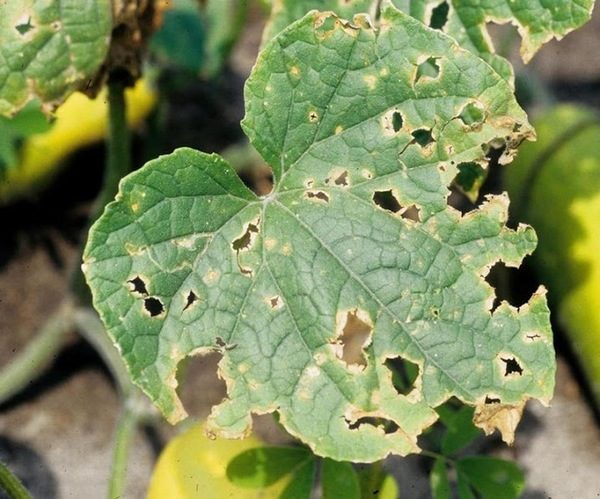
Anthracnose (copperfish) is also of fungal origin. It affects all plants from the pumpkin family. This is one of the most common causes of stains on cucumber leaves in a greenhouse. The source of infection is plant debris, insects, seed, irrigation water and rainfall, wind, as well as urban litter. The pathogen feels most comfortable at an air temperature of + 4-30 ° C and a humidity of about 90%. With a decrease in humidity of up to 60%, the fungus enters into a state of suspended animation and does not appear.Under open ground conditions, anthracnose also occurs, although rarely.
Infection can occur at any stage of plant development, so you need to inspect both seedlings and adult bushes. The abnormal process begins from the bottom of the bush. Brown dents begin to appear on the root neck and stems. Initially, they are small, but then increase, and because of this, the stem can break off.
Further along the edge of the leaves and along the veins yellow or brown spots are drawn from 5 mm to 40 mm in diameter. Gradually they spread to the stems. Also there is a merger of white spots on the cucumbers and their loss. As a result, holes form. Affected stems become fragile. On the vegetables themselves, elongated pink spots may appear, which go deep into the vegetable to half a centimeter. The affected plant dies.
The use of alternative medicines
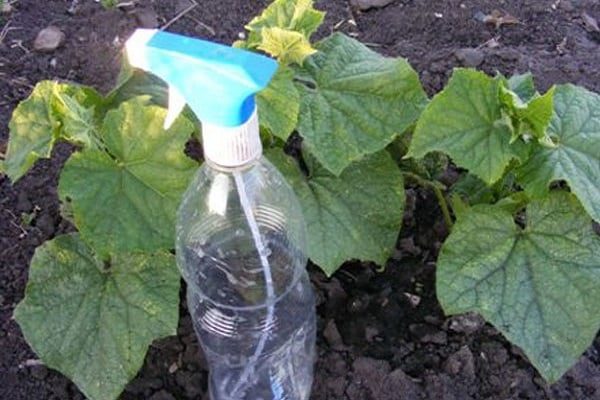 Often in the initial stages it is possible to do with folk methods. Their advantage is safety. They do not have a harmful effect on vegetables, so the crop harvested after irrigation of the bushes can be eaten. There are many recipes for folk remedies and they are all equally effective. Before starting therapy, the affected leaves must be removed and burned.
Often in the initial stages it is possible to do with folk methods. Their advantage is safety. They do not have a harmful effect on vegetables, so the crop harvested after irrigation of the bushes can be eaten. There are many recipes for folk remedies and they are all equally effective. Before starting therapy, the affected leaves must be removed and burned.
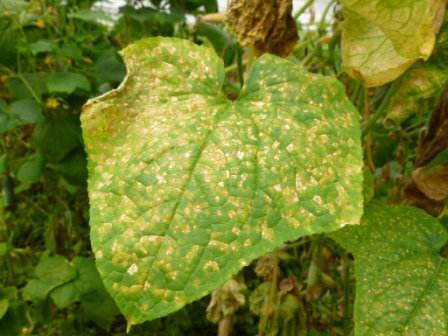 You may be interested in:
You may be interested in:For different diseases, you need to use different means:
- Powdery Mildew Pour 40 g of soda ash into a bucket of warm water and stir.
- Downy mildew. 400 g of onion husks pour 10 liters of water, put on fire and bring to a boil. Leave the cooked broth in a warm place for 3 days.
- Spider mite. In 1 liter of water, brew 60 g of mustard powder and let it brew for 3 days in a closed container. Then add another 3 liters of water to the resulting product.
- Anthracnose. Dilute 1 kg of ash in 10 l of water. In order for the medicine to stick to the tops better, chips of tar soap can be added to it.
Use of chemicals
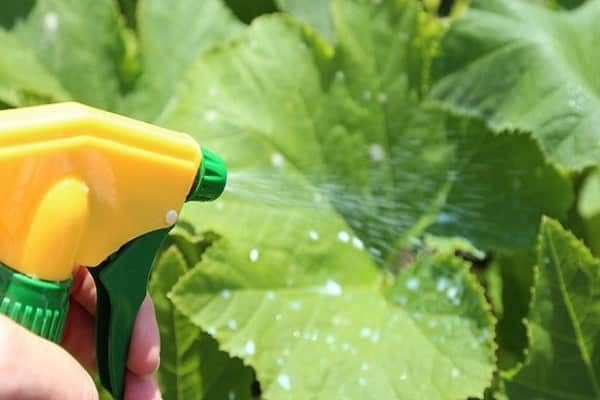 With the rapid course of pathology, the use of purchased drugs is justified. For mealy, downy mildew, antimycotic drugs (for example, Bayleton or Vitaros) will be effective. Spider mites are fought with acaricides or insect acaricides (e.g. Actellic or Neoron). You can treat plants from anthracnose with the help of antifungal drugs of contact or systemic action. Agronomists are advised to use Polyram or Quadris.
With the rapid course of pathology, the use of purchased drugs is justified. For mealy, downy mildew, antimycotic drugs (for example, Bayleton or Vitaros) will be effective. Spider mites are fought with acaricides or insect acaricides (e.g. Actellic or Neoron). You can treat plants from anthracnose with the help of antifungal drugs of contact or systemic action. Agronomists are advised to use Polyram or Quadris.
It is difficult to fight with ascochitosis. A good effect is given by such means as Saprol or Tiram. You need to buy drugs in specialized stores. It is important to pay attention to their expiration date. In order for therapy to be more effective, it is necessary to treat not only diseased, but also healthy plants that are located nearby, as well as the soil on which they grow. If most of the plant is covered with spots - it will not be possible to save it.
Prevention
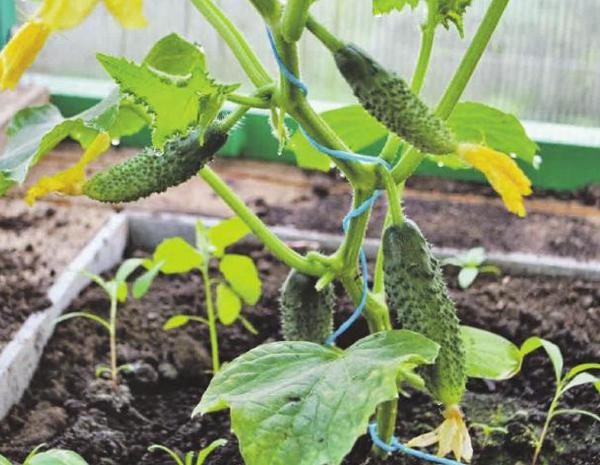 White spots on cucumbers can be prevented. To do this, it is enough to observe the following rules:
White spots on cucumbers can be prevented. To do this, it is enough to observe the following rules:
- regularly remove weeds and loosen the soil;
- when planting crops, maintain a large distance so that subsequently between the bushes air circulates normally;
- water the plants only with warm water, preferably under the root;
- after work, disinfect the inventory;
- adhere to crop rotation, do not plant seedlings every year in the same place;
- mulch;
- timely top dressing.
Normally, white spots on the leaves of cucumbers should not be. And if this has already happened, the summer resident needs to analyze what events preceded this. Further, when the origins of the problem are identified, you can choose the appropriate method of therapy. Timely action will help keep the plant alive. And so that the problem does not return again - the culture should be properly looked after.

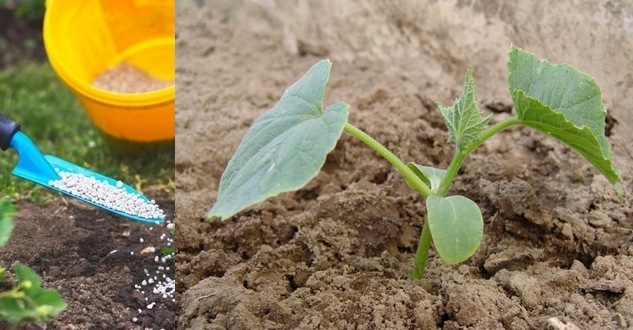
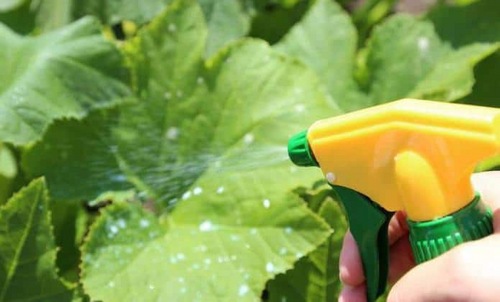
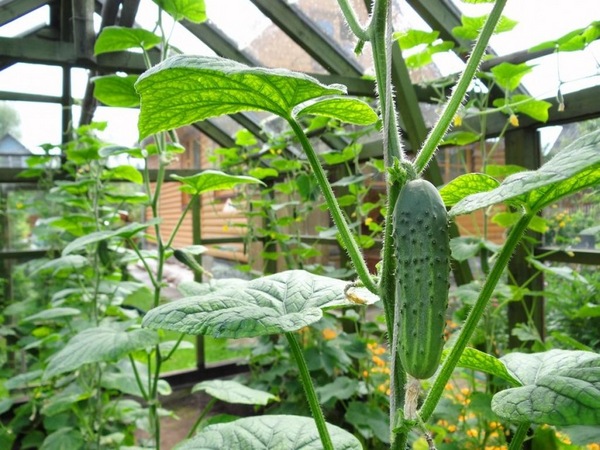
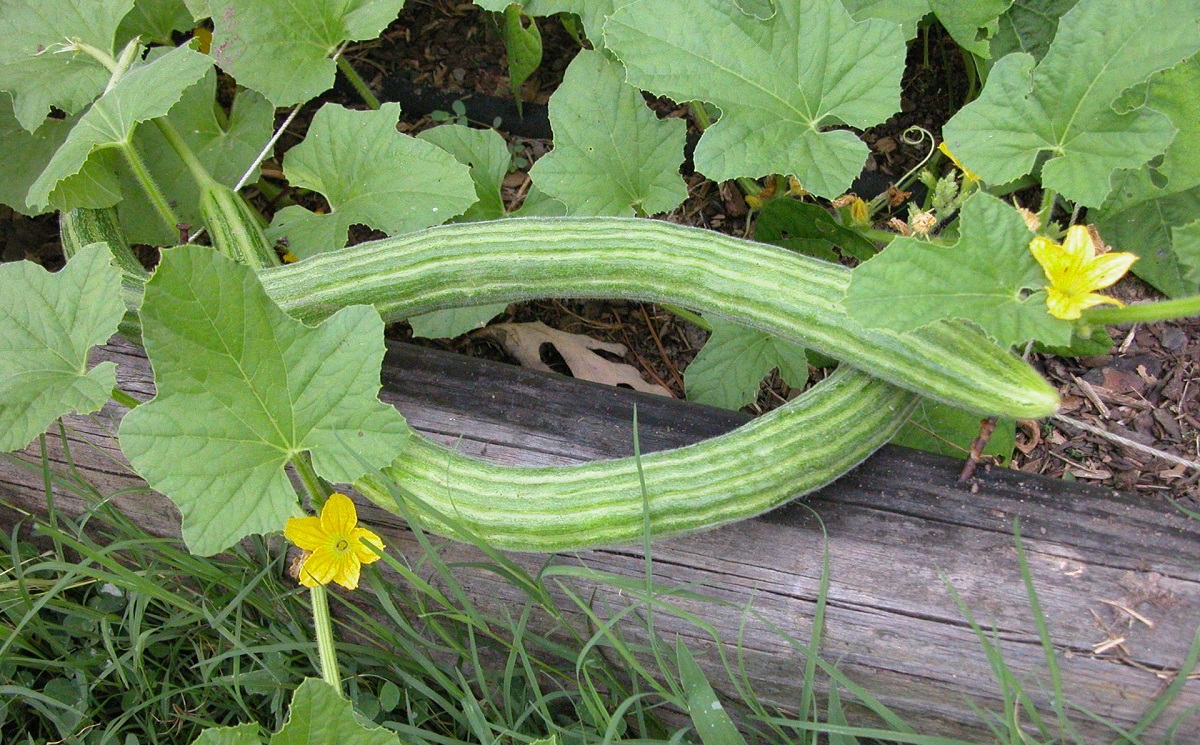 Armenian cucumber with melon flavor: description and characteristics, reviews
Armenian cucumber with melon flavor: description and characteristics, reviews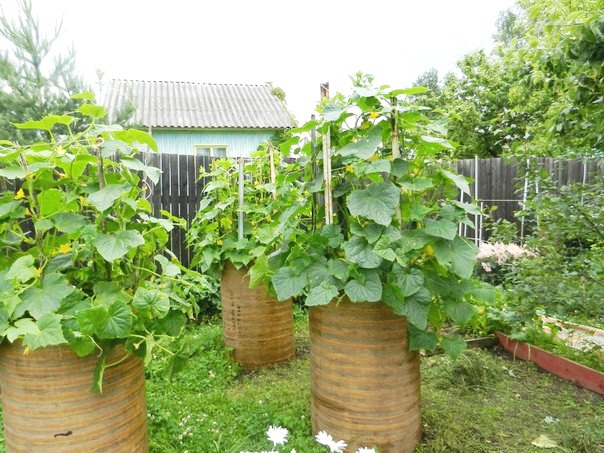 Do-it-yourself vertical beds for cucumbers: schemes, photos
Do-it-yourself vertical beds for cucumbers: schemes, photos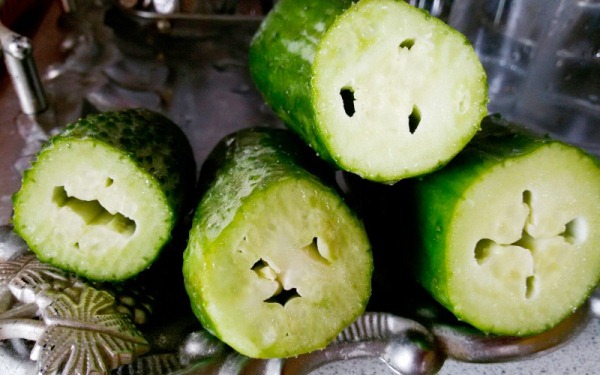 Hollow cucumbers: reasons for the appearance of hollow, what to do
Hollow cucumbers: reasons for the appearance of hollow, what to do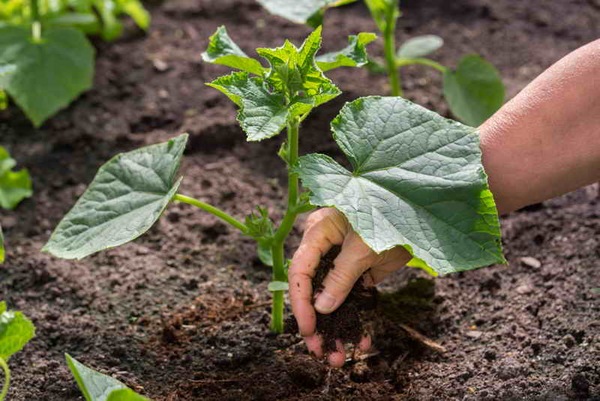 Which manure is best for cucumbers: application, how to breed
Which manure is best for cucumbers: application, how to breed